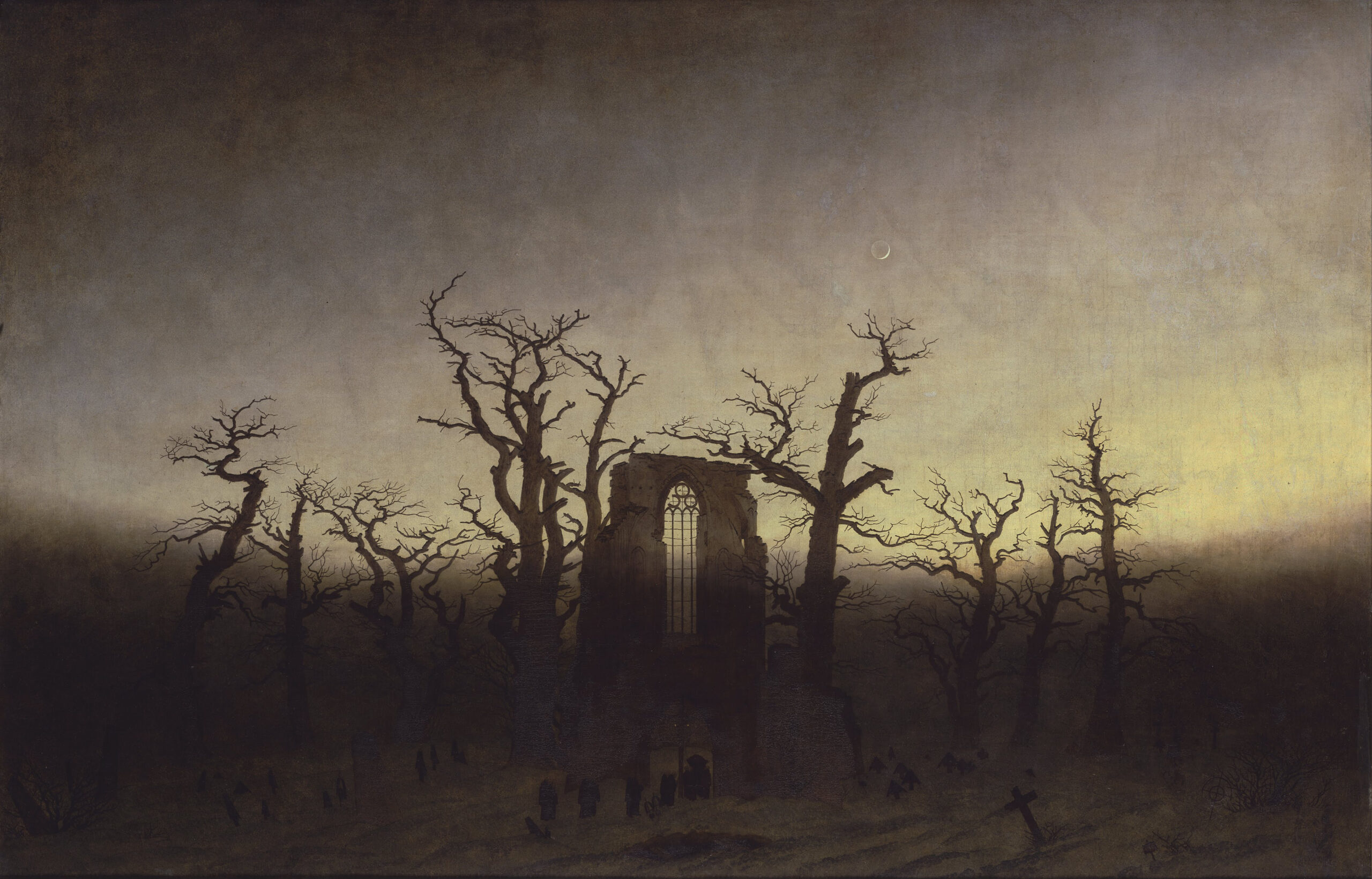 Abtei im Eichwald, known in English as The Abbey in the Oakwood, is one of many of Caspar David Friedrich’s depictions of the ruins of Eldena Abbey. This particular iteration stands out because of the dark, Gothic tone of the piece. The funeral, graveyard, scraggly trees, waning light, and sliver of a moon all combine in this painting to send a message about the relationship between nature and humanity. Painted between 1809 and 1810, it is solidly a part of the Romantic Period.
Abtei im Eichwald, known in English as The Abbey in the Oakwood, is one of many of Caspar David Friedrich’s depictions of the ruins of Eldena Abbey. This particular iteration stands out because of the dark, Gothic tone of the piece. The funeral, graveyard, scraggly trees, waning light, and sliver of a moon all combine in this painting to send a message about the relationship between nature and humanity. Painted between 1809 and 1810, it is solidly a part of the Romantic Period.
Many people interpret this piece of being representative of the temporary nature of humans and human creations. This is both because of the crumbling Abbey and the funeral. The combination of a grand building being brought down to such a disheveled state and the reminder of human death creates a theme of humanity coming to a close. While the Abbey in this painting was inspired by a real place, the foreboding trees were a creative choice, so their presence is obviously significant.The contrast between the tiny, mourning humans and the tall, overgrown trees finetunes the message to one of nature overtaking humanity.
This is related to German environments because it depicts the role of trees, and by extension forests, seen throughout many pieces of art and literature, such as the Brothers Grimm’s Fairy Tales. Forests are consistently shown as powerful, mystical forces. They are neither good nor evil, but it is understood they should be feared. The imagery of these trees overtaking a religiously sacred place is a classic example of this. The fact that German artists and writers persistently chose this specific portrayal of forests shows a broader cultural dynamic between Germans and their trees.
Geographically speaking, this dynamic makes sense and can help modern day people understand what a pre-industrialized Germany looked like. It is difficult to picture what it was like before most places were easily navigable by vehicles, but that time is well-preserved by German artworks like this one. In a time where travel was by foot, directions were word-of-mouth or from personal experience, and the technology to efficiently create pathways and roads was just not there, forests were a genuinely dangerous place to travel through. The high risk of getting lost with little hope of rescue contributed to the formidable reputation of forests in German art.
That being said, forests were also an easy source of wood for the average German. With wood being necessary for everything from heating to building, its appearance as an endlessly accessible and vital resource for early Germans granted forests a level of respect. This complicated perspective on forests created from their role as both dangerous, inconvenient, travel-inhibitors and also an invaluable resource of the fuel for daily life is one that is difficult to understand from simply looking at the facts, but becomes much clearer in light of artistic renditions such as this one.
Citations:
Frenssen, Birthe. “Ruins of Eldena Abbey.” Caspar David Friedrich Seit 1774 In Greifswald, Universitäts- Und Hansestadt Greifswald, http://www.caspar-david-friedrich-greifswald.de/ruins-of-eldena-abbey.html.
Friedrich, Caspar David. Abtei Im Eichwald. 1809, Alte Nationalgallerie.
